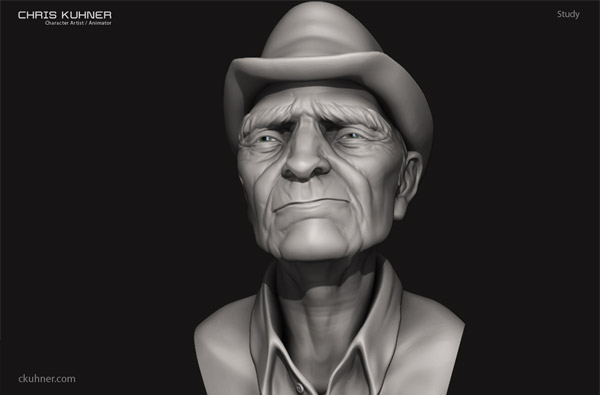
Image Credit: Study by Chris Kuhner
Augmented Reality (AR) experiences often depend on 3D models and the contributions of specialized 3D artists. 3D Cloud has an entire team of 3D artists who spend their days finding ways to take AR experiences from average to visually amazing through exceptional 3D art and animation. According to two of our top 3D artists, Sean Brice and Chris Kuhner, there are five keys to great 3D art that separates the mediocre from the magical: backstory, concept, silhouette, reference, and feedback.
1) Backstory in 3D art
Whether it’s for a game or an advertising campaign, there needs to be backstory, a context, in which to place what is being created. Backstory helps to define the situation around what is being created and can strongly influence the design. If a character is to be created for a game, and they live in a dirty grimy city, the attire for the character will not be well kempt and clean cut. This is true for a florist as well, they are expected to be bright, but pleasing, with very subtle, elegant movements. Backstory should never be overlooked. Without context, designs can wander and lose focus of what they are trying to achieve.
2) Concept in 3D art
Once a backstory for the creation has been established, it is necessary to generate a concept. It does not matter if it’s video clips for animation reference, paintings, or just stock photography. What’s most important is that the visual clearly represents what it is you are looking to create, and that it is contained within the backstory or context you have established. Having a clear concept developed within the established backstory is the best way to create a plan of action for the project. However, there are times when a concept has already been laid out. Sean Brice demonstrated this in creating an amazing fan art piece from one of his favorite games as a kid, Xenogear. Having the game to work off of, he was able to get everything he needed from the model itself, to the animations and effects needed to pull off the transformation
3) Silhouette in 3D art
When working on a concept, one of the single most important aspects to consider is the silhouette. It is incredibly important, especially when creating characters, to define a proper silhouette. A well thought out, black silhouette should be as recognizable and interesting as the full color and detail version. A successful and proportional silhouette is also a great tool to start blocking out the model. It will help establish the major forms and once those are established, the smaller details will start to fall into place.
4) Reference in 3D art
Reference is the art of applying real life movements, anatomy, textures and structures to 3D animations. There is not a single fantasy creature, object or character without a basis in real life. Whether designing a concept for a human, structure or texturing a finished model, reference plays an important role in great 3D art. It helps artists to nail proportions, anatomical structure, texture and material attributes and movements in animation. In creating 3D art for advertising, reference allows for the successful recreation of products in a 3D environment.
5) Feedback in 3D art
Asking for and receiving feedback are critical steps in the 3D art creation process. Objective reviews and discussions of work with knowledgeable colleagues can help with both quality control and new idea generation. Even if feedback might not directly apply to the project at hand it is always useful to hear alternative perspectives. Feedback and collaboration simply create better 3D art.
Of course, there are a number of other factors to be considered when creating 3D art, whether it’s for games or an AR advertising campaign, but these five keys are the pillars that ensure a solid foundation for captivating 3D art experiences.










